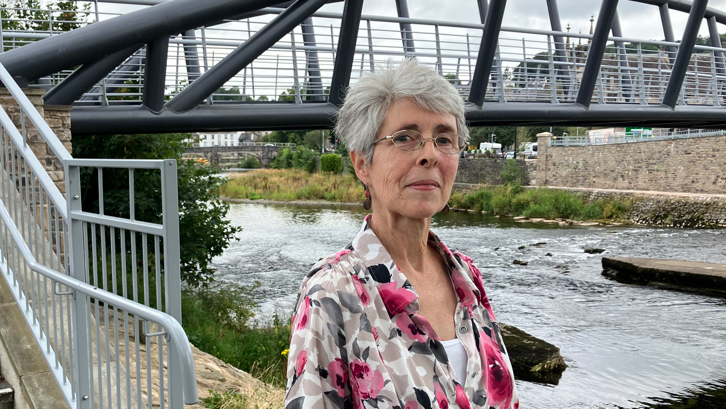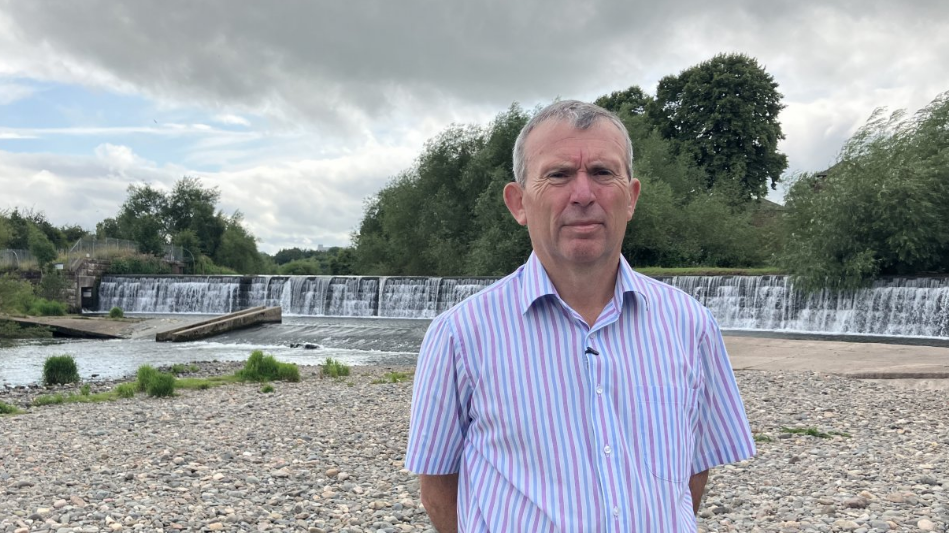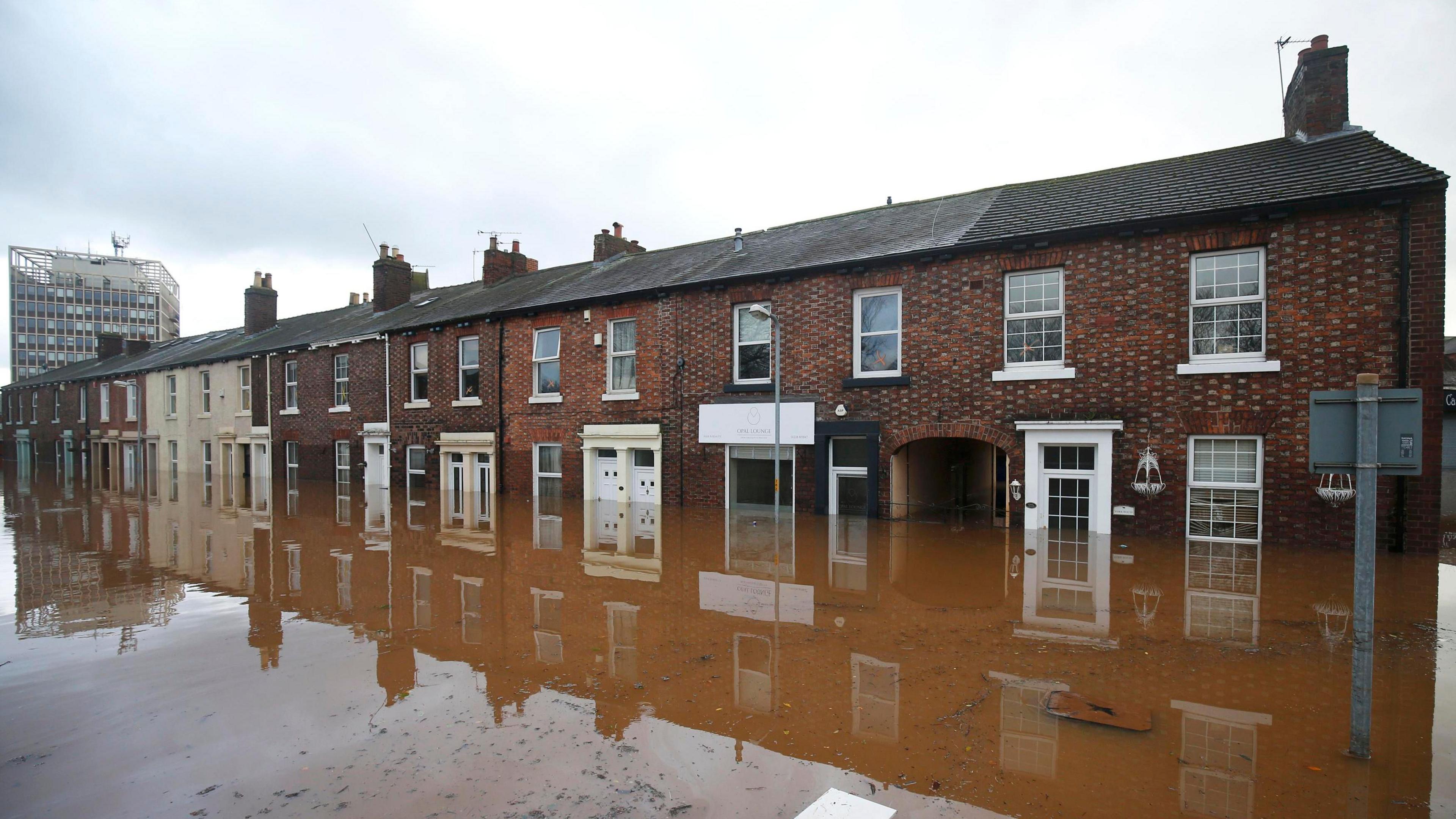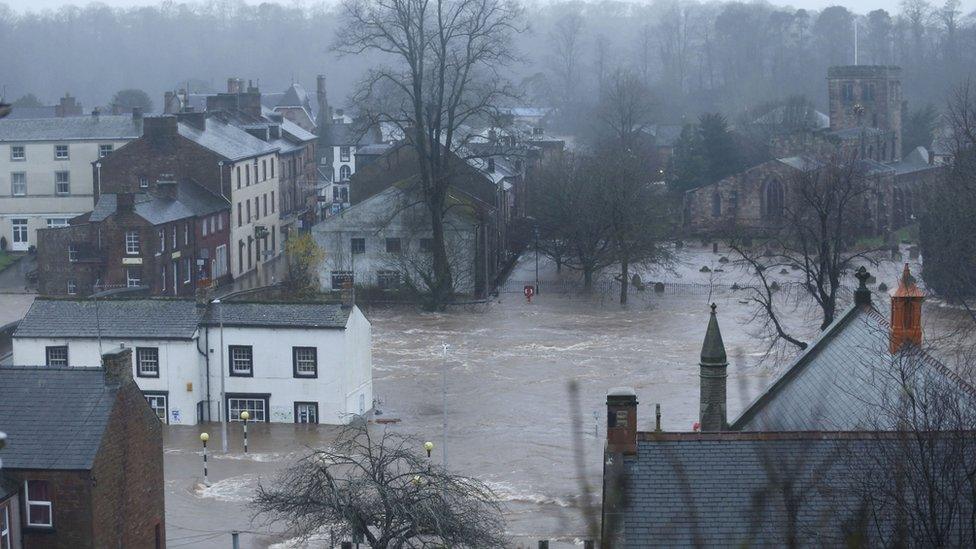Flood planning gaps could put 'lives at risk'

Thousands of people in Cumbria were flooded out of their homes or left without power in 2015
- Published
People's homes, and even their lives, could be at risk because of gaps in the emergency response to severe weather, communities have warned.
Cumbria was left devastated after Storm Desmond in 2015 and has been inundated by flood water on numerous other occasions.
Community volunteers said the overhaul of local councils in Cumbria had left gaps in the system.
The local authorities tasked with responding to such emergencies insisted they were working hard to make sure people had the information and support they needed.
Kendal
Community volunteers in Kendal warned the recent overhaul of local councils in Cumbria had created problems around flood planning.
The old two-tier system, which included a county council and six district councils, was replaced by two unitary authorities in 2023.
Lis Dales, who organises the Castle Street Community Flood Action Group, said she used to give her community an advance warning before a flood alert was issued.
She said under the old system, an officer from her local district council would contact her early in the day when a flood warning was expected.
The Environment Agency (EA) would also phone her with detailed information, such as when the river Kent would peak in her local area, Ms Dales added.
"I would go door knocking, just to make sure that everybody that was in would know," she said.
She would also email residents so the community could enact its flood response plan.

Lis Dales warned the council reorganisation had left a gap in the system
But in January, Ms Dales said she received no contact ahead of a flood warning being issued.
She said: "It was actually worse, thinking there was something in place when there wasn't.
"At least now we know, we'll take our own appropriate action. But we really need something from an authority to kickstart the whole procedure."
She said inquiries with the new unitary authority, Westmorland and Furness Council, revealed the reorganisation had left a gap in the system.
A spokesperson for Westmorland and Furness Council said: "Following our first winter, we became aware that we needed to make further improvements to our emergency planning and our community resilience plans and this has been a top priority for us this year.
"We are actively strengthening our approach to help to keep our communities better informed and supported."
Keswick
Claire Peat, project manager for Keswick Community Emergency Recovery Partnership, described a near miss where floodgates which should have been shut during heavy rain remained open.
She said when Storm Isha hit in January, she asked the EA to close the floodgates as water rose in the river.
"I was told that unfortunately, because they’ve got limited operational staff, their ops team were already out and deployed in Appleby, dealing with existing flooding," Ms Peat said.
The fire and rescue service held another set of keys for the gates as a "plan B", but the brigade’s crews were also deployed elsewhere, she added.
Luckily on that occasion, homes in Keswick were "spared by the fact the weather decided to stop raining," she said.
Carlisle
Luis Eckersley, the vice-chair of Carlisle Flood Action Group, said he did not have as comprehensive access to information about flood response plans, such as where people should go when evacuated, as he used to.
"The worst case scenario is that we end up with vulnerable people being stranded in their homes or potentially their lives put at risk and that is what we want to avoid," he said.

Luis Eckersley, vice-chair of Carlisle Flood Action Group
Mr Eckersley added that communication had been better when a group called the Cumbria Strategic Flood Partnership held meetings, but that it had been dormant for more than two years.
A spokesperson for Cumberland Council said it was "committed" to providing the public with essential information as soon as a flood threat is identified.
The council added that it was "actively engaged in re-establishing the Cumbria Strategic Flood Partnership, with the first meeting being held in November".
Response
A spokesperson for the EA said it was "committed to reducing flood risk for communities in Cumbria".
"During periods of heavy rainfall, our priority is the safety of the public and it is important that we act quickly," they said.
The EA added that it would proactively contact flood action groups to update them with the latest situation wherever possible, but that it may not be able to do so before issuing a flood warning or operating an asset.
"That's why we always encourage residents to sign up for our flood warning service," the spokesperson added.
Follow BBC Cumbria on X (formerly Twitter), external, Facebook, external and Instagram, external. Send your story ideas to northeastandcumbria@bbc.co.uk
More stories from BBC North East and Cumbria
- Published10 March 2024

- Published21 May 2019

- Published7 December 2015
